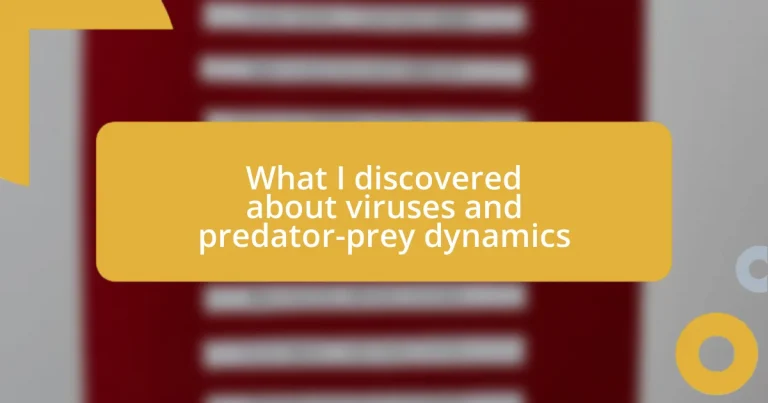Key takeaways:
- Viruses play a critical role in regulating bacterial populations and maintaining ecosystem balance through population control and promoting genetic diversity.
- Predator-prey dynamics are essential for ecosystem health, preventing overpopulation and supporting biodiversity, illustrated by case studies like the lynx-hare and sea otter-sea urchin relationships.
- Findings on predator-prey interactions and viruses have significant applications in conservation, agriculture, and disease management, highlighting the interconnectedness of ecological systems.
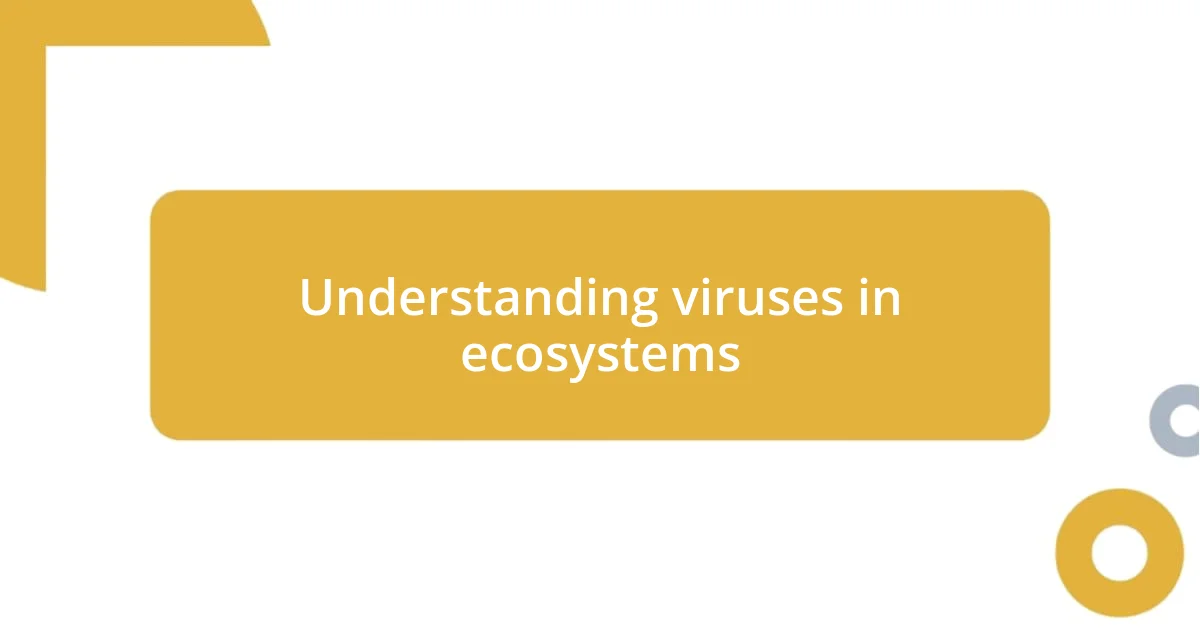
Understanding viruses in ecosystems
Viruses are often overlooked in discussions about ecosystems, yet their impact can be profound. I remember a time while observing a pond ecosystem; I was fascinated to learn how viral infections can regulate populations of bacteria, influencing nutrient cycling. Isn’t it intriguing how these tiny entities can play such a critical role in maintaining the balance in nature?
I’ve often wondered, how do viruses navigate their relationships with hosts? In my experience, it seems that they exist in a delicate dance, sometimes harming their host organisms, but at other times facilitating genetic diversity through horizontal gene transfer. This aspect underscores their complexity, revealing that they aren’t just agents of disease, but also vital players in evolutionary processes within ecosystems.
When I studied the role of bacteriophages, which specifically infect bacteria, I found it remarkable how they can keep bacterial populations in check. This example illustrates a larger concept: viruses contribute to the overall health of environments by preventing any single species from dominating. Don’t you think it’s reassuring to know that even the smallest components of our ecosystems can have such significant and balancing effects?
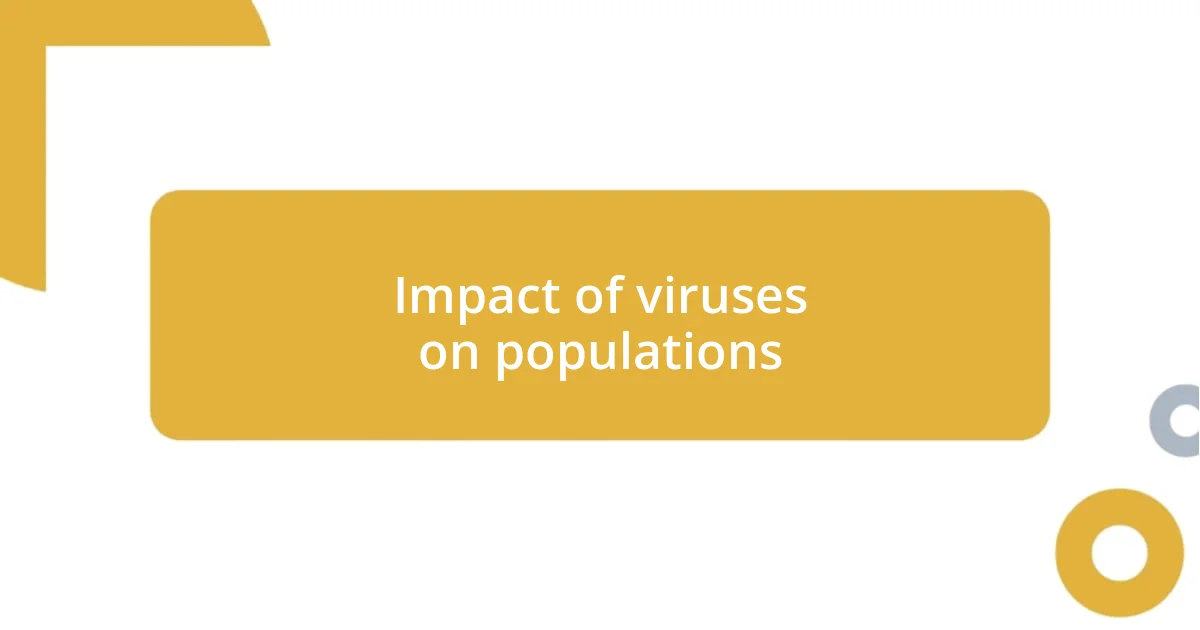
Impact of viruses on populations
Viruses exert a profound influence on populations, often acting as natural population regulators. I once stumbled upon a fascinating study that showed how a viral outbreak decimated a local plankton population, leading to unexpected shifts in the food web. It was eye-opening to witness firsthand how a single viral infection could ripple through the ecosystem, affecting not just the plankton but also the fish that relied on them for food.
In another instance, I observed how viruses could promote diversity within a bacterial environment, allowing less competitive strains to thrive when the more dominant ones were culled by infection. This dynamic shift is crucial; it reminded me that viruses can function almost like a gardener in an ecosystem, trimming overgrowth and allowing for a variety of life forms to flourish. Have you ever thought about how such seemingly destructive agents can foster resilience in nature?
Lastly, insights from my research revealed the long-term impacts of viruses on host populations. For example, repeated viral outbreaks can lead to genetic adaptations, shaping the evolution of the host species. Reflecting on this, I realized that these interactions are not just about survival; they highlight the interconnectedness of life. Viruses, in their understated roles, drive evolutionary innovation and maintain ecological balance, a reminder of how life’s complexities are intricately woven together.
| Impact | Description |
|---|---|
| Population Regulation | Viruses can reduce population sizes of certain species, preventing overpopulation and maintaining ecosystem balance. |
| Diversity Promotion | By infecting dominant strains, viruses enable less competitive species to thrive, promoting biodiversity. |
| Evolutionary Pressure | Repeated viral infections can drive genetic adaptations in host populations, influencing evolutionary processes. |
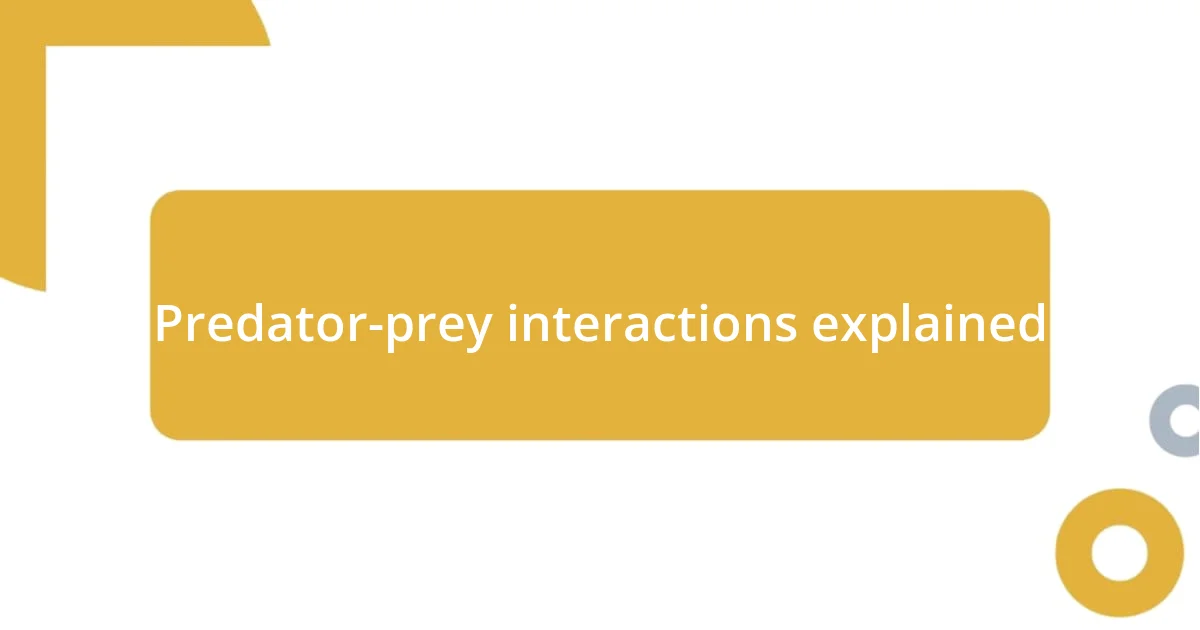
Predator-prey interactions explained
Predator-prey interactions are fundamental to understanding ecosystems. In observing nature, I’ve often found myself captivated by these dynamics. Knowing that predators maintain the populations of their prey helps prevent overgrazing or overpopulation, which can destabilize entire ecosystems. It reminds me of a walk I took through a forest where deer were plentiful, yet the presence of wolves kept their numbers in check, creating a balance that allowed various plants and other animals to thrive.
These interactions can be summarized with these key points:
- Population Control: Predators regulate prey populations, helping to maintain a healthy ecosystem balance.
- Biodiversity Maintenance: By keeping prey populations in check, predators allow diverse plant and animal species to flourish.
- Ecosystem Health: Healthy predator-prey dynamics contribute to rich, functioning ecosystems, influencing nutrient cycles and habitat conditions.
From my experiences studying these interactions, I’ve gathered that the intricate dance between predator and prey is not just a survival tactic; it’s a complex web that sustains life. I remember when a local nature group shared their findings on how removing a single predator species led to overpopulation of prey, which then devastated plant life. The urgency in their voices resonated with me, revealing just how delicate these relationships can be.
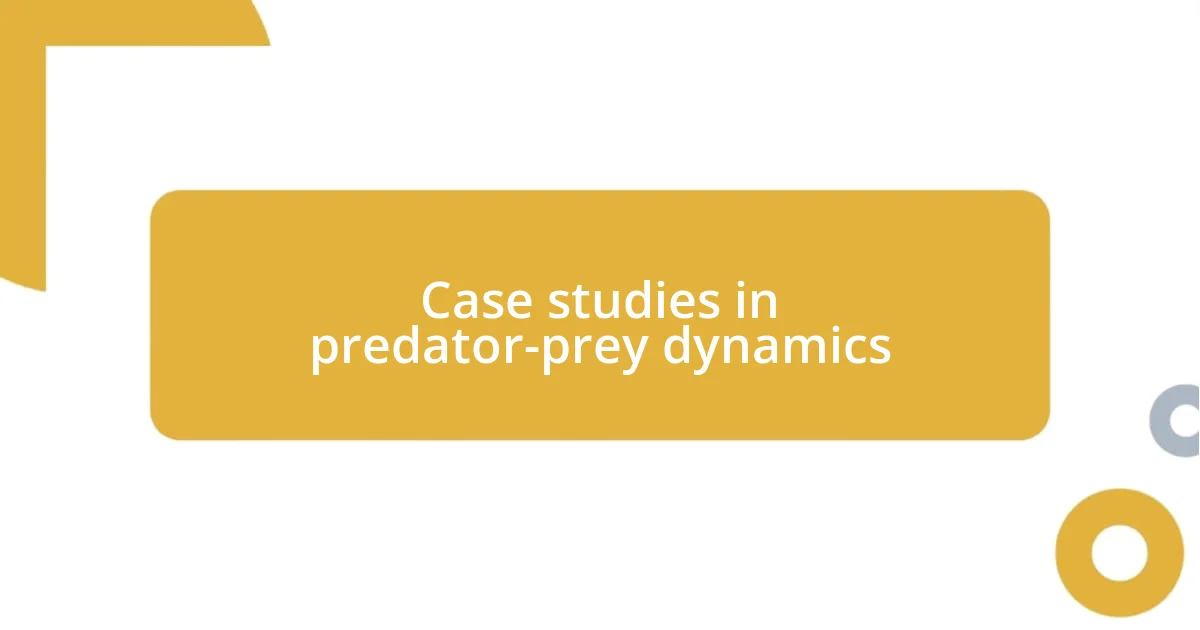
Case studies in predator-prey dynamics
When I first delved into the world of predator-prey dynamics, a specific case study on lynx and snowshoe hare caught my attention. The cyclical patterns of their populations were nothing short of mesmerizing, reflecting a delicate balance. I remember visiting a habitat restoration site and witnessing firsthand how the fluctuations of these two species affected the entire ecosystem; it was like watching a live science experiment unfold before my eyes.
Then there’s the fascinating relationship between sea otters and sea urchins. One particularly impactful study I read emphasized how the decline of sea otters led to the overpopulation of sea urchins, which in turn devastated kelp forests. It struck me then—what somber consequences the removal of a single predator can produce. During a beach cleanup, I couldn’t help but ponder how vital these otters are for maintaining a vibrant underwater ecosystem. Isn’t it interesting how interconnected life can be?
On a smaller scale, I’ve observed bees as both pollinators and prey for various birds. In my own garden, I often see how birds regulate bee populations, allowing the best pollinators to thrive. This relationship emphasizes that even in urban settings, the predator-prey interactions can dictate what life flourishes or falters. Have you ever reflected on the role of our gardens as micro-ecosystems? Each plant and animal plays a role in the larger dance of life, reminding us that even in small spaces, the predator-prey dynamic is alive and kicking.
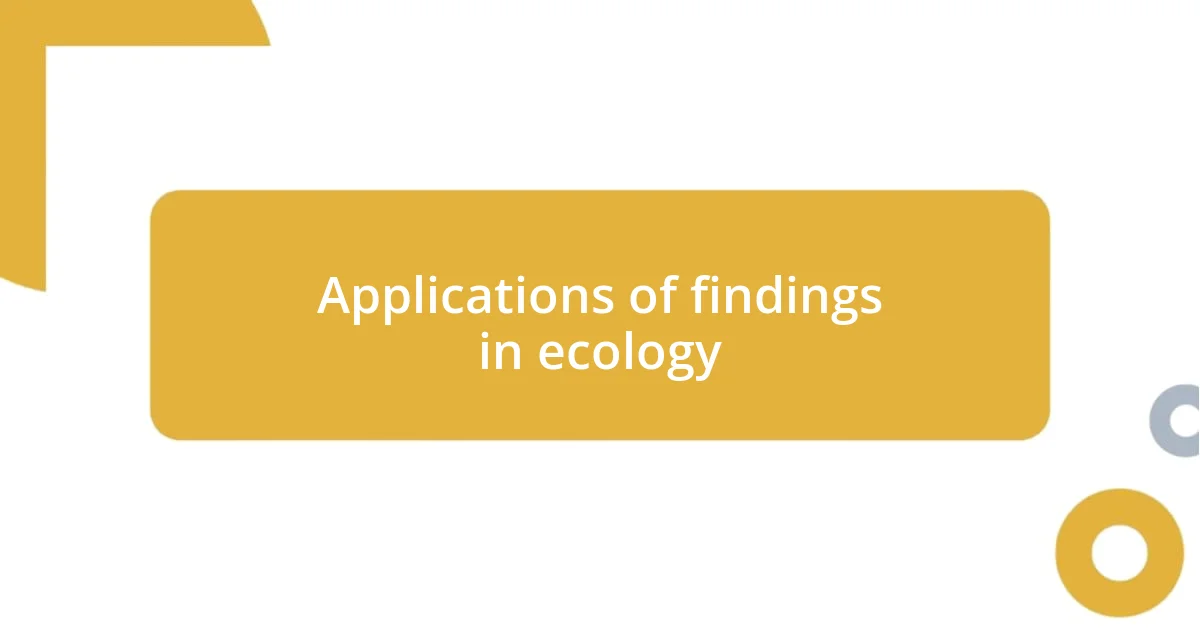
Applications of findings in ecology
Ecological findings on predator-prey dynamics hold significant applications in conservation efforts. I remember a workshop on wildlife management where an expert shared the success story of reintroducing wolves to Yellowstone National Park. Their return not only restored balance among elk populations but also rejuvenated riparian zones, showcasing how predators can influence entire ecosystems. It made me realize that strategic interventions could breathe new life into degraded habitats.
Additionally, understanding these dynamics is crucial for agricultural practices. As I strolled through a local farm, a farmer proudly pointed out the role of certain bird species in controlling pest populations. This balance prevents over-reliance on chemical pesticides, promoting a healthier environment. Have you ever thought about how our food choices can indirectly support ecological balance? It’s a reminder of the interconnectedness of life—what affects one aspect can ripple through an entire system.
Moreover, the insights about viruses in predator-prey relationships can inform disease management in wildlife. I attended a lecture on how diseases can spread more readily among prey species, which are in high numbers due to the absence of predators. This emphasizes the importance of maintaining a balanced predator-prey ratio to manage not only species populations but also health risks. Isn’t it fascinating to think that the survival of one species can have such profound implications for the overall health of an ecosystem? Each discovery fuels my curiosity and commitment to fostering ecological understanding.












